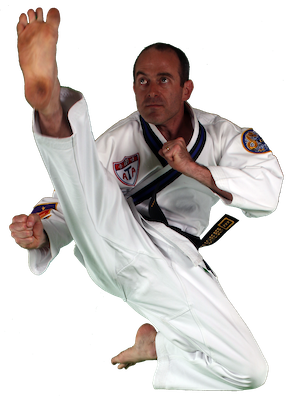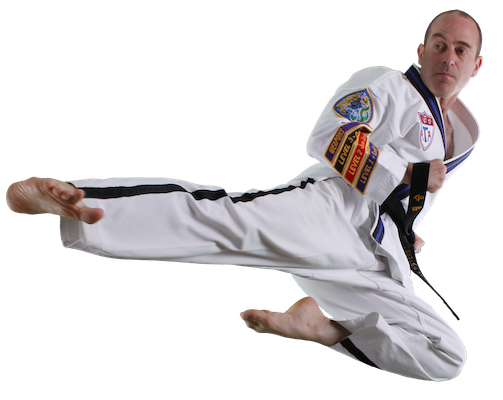
Parting the Clouds: The Science of the Martial Arts, by Grenville Harrop
Grenville Harrop is both a scientist and a dedicated martial artist, so he is well-qualified to explain the physics behind martial arts principles that are intuitive to experienced instructors. In Parting the Clouds, he provides detailed explanations of the formulas and concepts that determine the amount of energy that a strike or kick transfers to its target in various circumstances. He also explains what factors affect the difficulty of breaking boards, which stances work best for offense and defense, and how to minimize the effect of a strike as it hits you.
The fundamental equation, which every martial artist (and certainly every instructor) should internalize, is this one: Kinetic Energy = ½mv2. This formula identifies the two components of energy transfer: mass and velocity. To generate more energy (and thus more power), we therefore need to either (a) increase the mass behind the attack (which is why hip rotation is so important) or (b) increase the velocity of the technique (which is why we need to condition our quick-twitch muscle fibers and train ourselves to breathe and relax throughout the motion).
But the formula does more than that. It also highlights a critical fact: Velocity is far more important than mass, because an increase in velocity has an exponential effect on kinetic energy. In other words, if you double your mass, you double your kinetic energy. But because velocity is squared, if you double your velocity then you quadruple your kinetic energy. This is reassuring news for people (like me) with relatively small physical stature: we can invest our effort in improving our speed and reap a tremendous return on that investment.
Parting the Clouds is packed with these kinds of insights. Why does a punch hurt less when the puncher is wearing a glove than when he or she strikes with two knuckles of a bare fist? Because Pressure = Force / Area. (Spread the force out over a greater area and the pressure decreases.) Why does straightening your rear leg in a front stance provide stability? Because every action has an equal and opposite reaction. (The force of the attack is met with equal force from the ground, which radiates up your straight leg.) Why does "going with the force" rather than "meeting the force" reduce the pain you feel when someone strikes you? Because force is inversely proportional to distance (Force = Energy / Distance), so increasing the contact distance reduces the force.
Anyone who practices martial arts diligently will eventually develop an instinctive understanding of how to perform effectively. But those of us who strive for mastery as martial artists, and particularly as instructors, should also seek a deeper understanding of the rationale underlying these instincts. For this endeavor, Parting the Clouds is an essential guide.


